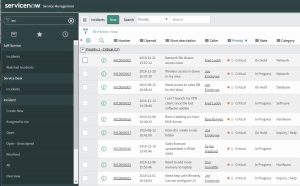ServiceNow Project Portfolio Management: Why You Should Streamline Your Project Portfolio—and How
Only 46% of companies value project management, says a study conducted by the Project Management Institute (PMI). And that's a story that usually ends sadly. Failing to pay adequate attention to the way you manage your projects can result in inefficiencies and waste that can decimate your bottom line. Every project, regardless of size, takes both physical and human capital, so streamlining your project portfolio can lead to significant benefits. In this article we will explore project portfolio best practices with ServiceNow Project Portfolio Management.
Why You Need to Streamline Your Project Portfolio
The list of reasons why it’s important to streamline your project portfolio is long, but some of the most compelling include visibility, better decision-making, efficiency, profitability, and collaboration.
1. Better Visibility into Projects
Deciding which projects to undertake using a concrete selection methodology increases visibility by enhancing awareness around the demands and constraints of each one. For example, you can gain visibility into:
For example, you can gain visibility into:
-
- Each project’s roadmap
- How funds are being allocated at any given moment
- How teams are collaborating around each project
- The status of each project, including roadblocks and challenges
2. Better Decision-Making
Without project portfolio management (PPM), stakeholders can be tempted to make decisions based on which projects are their pets, which tend to be the ones they are most personally invested in. Also, at times, a valuable project may be underappreciated by a decision-maker. PPM solves both of these problems. With a management system in place, it’s easier to decide:
-
- How to allocate funds
- How to shift project personnel
- When to terminate a failing project
- When and how to replicate the success of an effective project
3. Improved Time and Cost Efficiency
Project portfolio management also helps speed up project completion while reducing cost. This is because it enables you to decide ahead of time who and what is needed for each project, so you can make the necessary adjustments down the road. Instead of throwing money at stop-gap measures ad hoc, you can predict potential issues and come up with more cost-efficient solutions.
4. Improved Profitability
A comprehensive PPM system includes scenario planning, where you see an analysis of the revenue stream each project will create. While most projects have significant value, with scenario planning, you can position projects head to head and see which ones carry the most long-term value.
5. Better Collaboration
One of the biggest enemies of collaboration is time, particularly because team members often get caught up in day-to-day tasks and other projects, and that prevents them from helping each other out. With a project portfolio management system, you can plan who will collaborate with whom weeks or months in advance and set everyone’s schedule accordingly.
Project Portfolio Management Best Practices to Implement Today
To maximize the benefits of a project portfolio management system, you should use it to identify business goals, develop evaluation criteria, and formulate a risk management strategy.
1. Identify Business Goals and Strategy
If the goals of your business are the motivating factor when deciding which projects to undertake, you may discover ways to leverage projects to meet these goals.
For example, suppose the IT team will soon be working on an application designed to streamline your accounting. Using your PPM system, you’ve identified reducing the cost of goods sold as a business goal. Instead of creating a new project centered on this objective, you can ask the IT team to weave this into the project they’re about to start. This allows you to strategize the best ways to accomplish objectives and the best people to use.
2. Develop a Project Evaluation Criteria
Each project in your portfolio has to earn its spot. To judge which ones deserve your attention and resources, you can use your project portfolio management system to evaluate each project idea. You can specify criteria such as:
-
- Best overall ROI
- Quickest time to completion
- Lowest cost
- Least strain on your human capital
3. Develop a Risk Management Strategy
As part of the roadmap planning aspect of your PPM system, you can identify potential risks and figure out—ahead of time—how to mitigate them. For instance, you should identify risks such as:
-
- How software projects may introduce security vulnerabilities
- Potential cost overruns
- The potential for a project to consume the energies of people needed for other tasks
Streamline Your Project Portfolio Management with GatewayNow
With GatewayNow by GSI, you can use ServiceNow PPM to manage project roadmaps and funding, choose which innovative solutions to pursue, and plan according to what-if scenarios—but without the full cost of a ServiceNow instance. GSI's ServiceNow experts are ready to show you how your company can benefit from ServiceNow with as few—or as many—users as you’d like. Reach out to learn more today.
